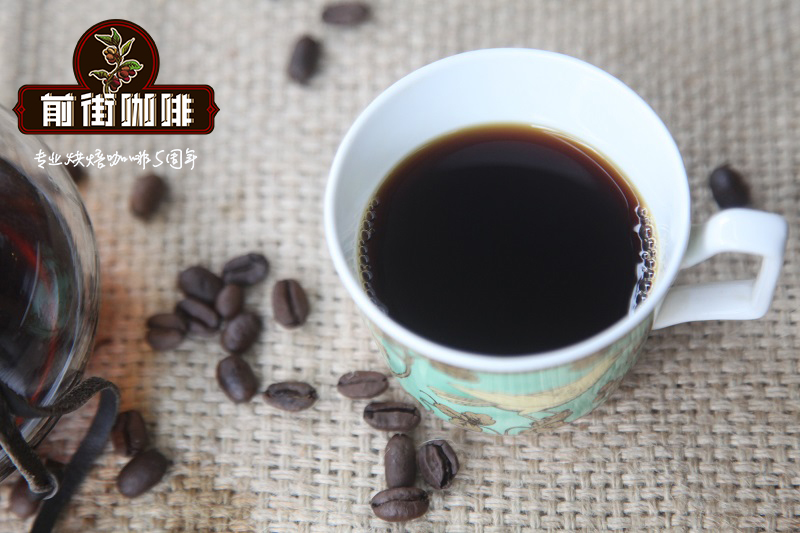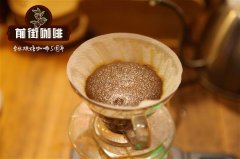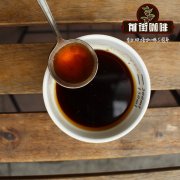Colombian Coffee Culture Colombian Coffee practices what are the producing areas of Colombian coffee

Professional coffee knowledge exchange more coffee bean information please follow the coffee workshop (Wechat official account cafe_style)
Coffee should be the most common refreshing drug in the world, and it is also the most economically valuable drink. The United States is the country with the highest coffee consumption, consuming 400 million cups a day. In Finland, the average person drinks four to five cups of coffee a day, the highest per person. Other countries such as Sweden, Italy, Japan and South Korea are also important consumers of coffee.
Today, Latin America is one of the most important coffee producing areas in the world, and coffee has become a specialty of Latin America. According to statistics, coffee plantations account for at least 45% of the arable land in Latin America today. Because of its geographical location, coffee beans from Latin America are mainly sold to the United States, followed by Europe and Asia. Generally speaking, coffee producing areas are mostly located in developing countries, while coffee consuming countries are the so-called first world. Although Latin America is a coffee producer, Latinos are also coffee lovers. In addition to the common American style, mocha, latte, cappuccino and espresso, each region also has its own drinking methods and terms, which leads to a unique coffee culture.
Of the coffee trees grown in Colombia, 66% are grown in modern plantations and the rest in small, traditionally run farms. The main varieties include Kaddura Caturra, Colombian Colombia, Tibica Tipica, bourbon Bourbon, elephant bean Maragogype, and Tabi. Farms and cooperatives across the country, large and small, run by more than 500000 farmers, are distributed in the country's 590 municipalities and 14 major coffee-producing areas, with a total of 2 million Colombians dependent on coffee cultivation for their livelihood.
In recent years, with the attention to the quality of coffee and the demand for fine coffee in the international market, production in micro-producing areas should be transported and is born, and small coffee farmers are organized to provide micro-batches mainly Micro-Regional Selections, and dozens of small farmers provide their unit harvest into a micro-batch to sell, quality control will be better, so they will have the opportunity to test through each batch. Select many high-quality small farmers' coffee in specific micro-producing areas. Its coffee flavor is more lively, with fresh aromas of ripe fruit and caramel, and the combination of sour taste and sweet taste is well balanced.
In Colombia, coffee consumption has lagged behind global trends for years, but it is now soaring, with experts citing the widespread supply of better coffee as a major factor.
At the same time, international entrepreneurs have discovered strange loopholes in premium coffee in the Colombian market. Starbucks arrived in 2014. California-based Tyler Youngblood launched a coffee roasting business in Colombia in 2010. His company, Azahar Coffee Co. The first Bogota coffee shop opened in 2013 in a makeshift metal container.
Colombian coffee has been well received and has gained international popularity with the brand "Juan Valdez". Juan Vades is a character created by the Colombian Coffee Farmers Association. He is a farmer with a mustache and a small donkey. He looks very kind. Colombians drink cortado coffee most often, with half coffee and half milk. In addition, Colombia's "caf é chaqueta" is similar to Mexico's "pottery pot coffee", putting sugar bricks in boiling water and adding coffee powder as if to put a sweet coat on the coffee.
Front Street Columbia Coffee Baking suggestion
Light baking City (fragrance): Umei acid, which is rare in Colombian coffee, but not astringent and bright and delicate, smooth taste is not traditional Colombian rich style but a bit of Costa Rican coffee flavor, acid turns sweet plum very quickly.
Re-baking (general C): the aroma of raisins is based on the background, the taste is surrounded by the range of fruit maple syrup, the sweet distribution of fruit milk on the tongue will not feel particularly thick, as the coffee temperature gradually drops, the whole feeling goes to a more round and sweeter depth.
There is a famous raw bean competition in Colombia-the Coca Zhuoyu Cup. The [Colombian Coca] bean of Front Street Coffee stands out from this competition. With 90 degrees water to cook, with a good sour plum, the overall sweet and sour feeling is obvious.
Qianjie coffee: Guangzhou bakery, the store is small but a variety of beans, you can find a variety of unknown beans, but also provide online store services. Https://shop104210103.taobao.com
Important Notice :
前街咖啡 FrontStreet Coffee has moved to new addredd:
FrontStreet Coffee Address: 315,Donghua East Road,GuangZhou
Tel:020 38364473
- Prev

How do Colombian coffee taste Colombian coffee beans? Colombian coffee culture
For more information on coffee beans, please follow the Coffee Workshop (official Wechat account cafe_style). According to the Organization of Aboriginal States of Colombia (Organizacin Nacional Indgena de Colombia,ONIC), there are 102indigenous tribes in Colombia that speak 64 different languages. 710 original areas have been set up in 228 administrative regions across the country.
- Next

How to brew Colombian Coffee Culture Colombian Coffee characteristics
Professional coffee knowledge exchange more coffee bean information please follow Coffee Workshop (Wechat official account cafe_style) Colombia is one of the world's top coffee exporters, shipping millions of bags of the best coffee beans abroad every year. But why is the world so in love with Colombian coffee? Colombia is a very prolific coffee exporter, second only to global industry.
Related
- Detailed explanation of Jadeite planting Land in Panamanian Jadeite Manor introduction to the grading system of Jadeite competitive bidding, Red bid, Green bid and Rose Summer
- Story of Coffee planting in Brenka region of Costa Rica Stonehenge Manor anaerobic heavy honey treatment of flavor mouth
- What's on the barrel of Blue Mountain Coffee beans?
- Can American coffee also pull flowers? How to use hot American style to pull out a good-looking pattern?
- Can you make a cold extract with coffee beans? What is the right proportion for cold-extracted coffee formula?
- Indonesian PWN Gold Mandrine Coffee Origin Features Flavor How to Chong? Mandolin coffee is American.
- A brief introduction to the flavor characteristics of Brazilian yellow bourbon coffee beans
- What is the effect of different water quality on the flavor of cold-extracted coffee? What kind of water is best for brewing coffee?
- Why do you think of Rose Summer whenever you mention Panamanian coffee?
- Introduction to the characteristics of authentic blue mountain coffee bean producing areas? What is the CIB Coffee Authority in Jamaica?

